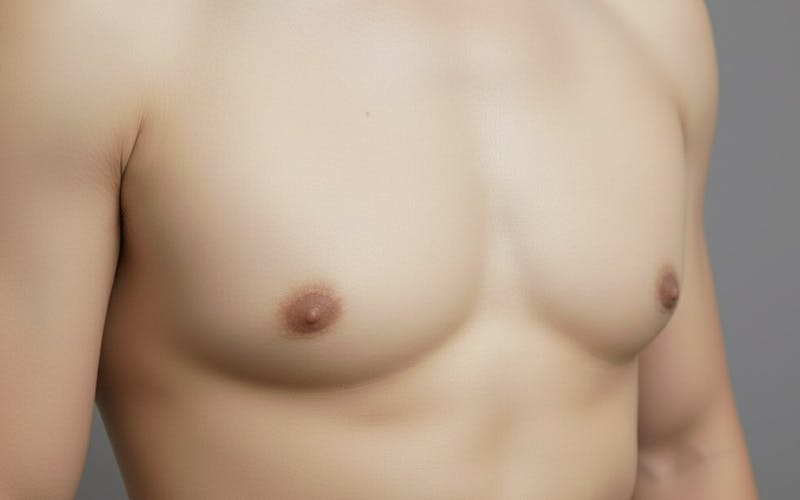
Gynecomastia is the enlargement of male breast tissue caused by gland growth rather than fat. This distinction matters because fat can shrink with diet and exercise, but glandular tissue usually remains. Men who develop gynecomastia often find it difficult to hide, and even harder to talk about. The chest becomes a source of daily stress, and simple tasks like choosing a shirt or going to the gym can turn into moments of discomfort. For many, the condition affects not only their body but also their confidence and sense of identity.
Dr. Michael Baumholtz, a dual board-certified Plastic Surgeon in San Antonio, Texas, has treated countless men who struggle with gynecomastia. He understands this isn’t just a cosmetic issue; it’s emotional too. His philosophy centers on safety, transparency, and precise technique. Many of his patients come after years of frustration, having tried to fix the problem on their own. For them, his expertise often provides both clarity and relief.
Causes of Gynecomastia
🗸 Steroids and Hormone Imbalance
Anabolic steroids are among the most common causes of gynecomastia in younger men and athletes. These substances disrupt the normal balance between testosterone and estrogen. While steroids elevate testosterone levels, they also accelerate the conversion of testosterone into estrogen, which stimulates breast tissue growth.
Even after steroids are stopped, once gland tissue has matured, it behaves like scar tissue, permanent unless removed surgically. This is one of the most important lessons for men using or considering anabolic steroids: the muscle growth may fade when steroid use stops, but the breast tissue rarely does.
🗸 Medication Side Effects
Certain prescription medications, including some psychiatric drugs, older acid-reducing medications, and drugs that block prostate or testosterone activity, can also trigger gynecomastia. Men are often surprised to notice breast tissue growth, particularly if they’ve never had hormonal issues before.
Stopping the medication may sometimes help, but once the tissue has been present for months or years, the changes are rarely reversible without surgery. These cases are handled carefully, often in coordination with other specialists to protect the patient’s overall health.
🗸 Other Medical Factors
Not all gynecomastia is related to steroids or prescriptions. Testicular tumors, pituitary disorders, and other endocrine conditions can also cause hormonal imbalance and breast tissue growth. Dr. Baumholtz routinely collaborates with endocrinologists to ensure a complete evaluation before surgery, preventing overlooked medical causes and ensuring treatment is safe and effective.
Can Gynecomastia Be Reversed Without Surgery?
The Window of Time
Whether gynecomastia can resolve naturally depends heavily on timing. In the early phase, breast tissue may feel soft or swollen. Stopping steroids or changing medications during this window may prevent further growth, and occasionally the tissue may shrink slightly.
Timing matters. Many men wait, hoping it will resolve on its own, only to find that the tissue has become too firm for non-surgical treatment.
Lifestyle Adjustments
Diet and exercise can reduce fat, but not gland tissue. Men with pseudogynecomastia (fat-related chest fullness) often see improvement with weight loss, while those with true gynecomastia do not. Even men in peak physical condition can find a persistent, firm bulge beneath the nipple, a hallmark of true glandular tissue.
Medical Therapy
There are medications that block or modify hormone activity, but their benefit is limited to very early cases. Once tissue is mature, these therapies rarely help. Dr. Baumholtz emphasizes that medical therapy may slow progression but cannot reverse established gynecomastia. Surgery remains the only predictable, lasting solution once gland tissue has formed.
Treatment Options With Dr. Michael Baumholtz
🗸 Minimally Invasive Surgery
For mild to moderate cases, Dr. Baumholtz combines liposuction with specialized tools to remove gland tissue through small, well-hidden incisions. This approach flattens the chest and enhances definition while minimizing scarring and downtime. It’s particularly effective for patients with both fat and gland tissue but little excess skin.
🗸 Advanced Surgical Solutions
For severe or long-standing gynecomastia, especially when the skin has stretched, Dr. Baumholtz may recommend a mastectomy with free nipple grafting. This procedure removes both gland and excess skin, restoring a flatter, natural chest contour. Although it’s a larger operation with longer recovery, it can be life-changing for men with advanced gynecomastia.
See Before and After Photos of Gynecomastia Surgery
Recovery in San Antonio
Recovery is a key part of achieving the best result. Most men will need to wear compression garments for about six weeks once drains are removed to control swelling and support healing. Heavy lifting and strenuous exercise are restricted early on to protect the repair.
Dr. Baumholtz provides detailed postoperative instructions and schedules regular follow-ups to monitor progress. Patients also have ongoing access to his team for reassurance and guidance, a hallmark of his San Antonio practice.
The Emotional Impact
Many men describe feeling isolated or embarrassed, avoiding the gym, swimming, or even wearing fitted shirts. The emotional strain can affect relationships and self-confidence.
Dr. Baumholtz recognizes this and strives to create a respectful, judgment-free environment where patients can speak openly. Simply having their concerns taken seriously often brings relief. For many, surgery represents not only a physical correction but also a renewed sense of confidence and control.
His San Antonio practice often sees men seeking revision after prior unsatisfactory procedures. This experience with complex cases highlights his dedication to achieving balanced, natural outcomes that align with patient goals.
Making the Decision
When to See a Specialist
Men should seek evaluation if breast tissue has persisted for more than a year, affects confidence or activity, or hasn’t improved with lifestyle changes. Early evaluation opens more options and prevents years of frustration.
Dr. Michael Baumholtz’s Guidance
Every consultation includes a full exam, review of medical and steroid history, and a discussion of realistic treatment paths. Dr. Baumholtz explains risks and benefits clearly and emphasizes informed, safe decision-making. For men across Texas, this level of clarity and honesty helps them move forward with confidence.
FAQs About Gynecomastia From Steroids or Medications
If I stop taking steroids, will it go away?
Once breast tissue has formed, stopping steroids may prevent further growth but won’t eliminate existing tissue.
Can exercise or bodybuilding reduce it?
Exercise can reduce fat but not gland tissue. Many men find the bulge remains despite excellent conditioning.
Is it always the same on both sides?
No. It’s often uneven, which can add to frustration and asymmetry concerns.
Does gynecomastia cause pain?
Some men experience tenderness; others are bothered purely by appearance. Both are valid reasons to seek evaluation.
Can it return after surgery?
If the underlying trigger, such as steroids or certain medications, is reintroduced, recurrence is possible.
How long should I wait before surgery after stopping steroids?
If the tissue has been stable for more than a year, it’s unlikely to improve naturally. That’s usually when surgery makes sense.
Can teenagers have surgery?
Yes, if the condition significantly impacts their confidence or daily life. Dr. Baumholtz carefully evaluates readiness and timing for each case.
Medical References
- Enlarged breasts in men (gynecomastia) - Symptoms and causes / Mayo Clinic
https://www.mayoclinic.org/diseases-conditions/gynecomastia/symptoms-causes/syc-20351793 - Gynecomastia: Pathophysiology, Evaluation, and Treatment / PubMed Central (PMC)
https://pmc.ncbi.nlm.nih.gov/articles/PMC2770912/ - Gynecomastia: What It Is, Causes, Diagnosis & Treatment / Cleveland Clinic
https://my.clevelandclinic.org/health/symptoms/16227-enlarged-male-breast-tissue-gynecomastia - Enlarged breasts in men (gynecomastia) - Diagnosis & Treatment / Mayo Clinic
https://www.mayoclinic.org/diseases-conditions/gynecomastia/diagnosis-treatment/drc-20351799 - Gynecomastia - PMC article on medication causes / PubMed Central
https://pmc.ncbi.nlm.nih.gov/articles/PMC2947973/ - Testosterone therapy: Potential benefits and risks as you age / Mayo Clinic
https://www.mayoclinic.org/healthy-lifestyle/sexual-health/in-depth/testosterone-therapy/art-20045728 - Medications causing gynecomastia overview - Mayo Clinic Care Network
https://www.kuh.ku.edu.tr/mayo-clinic-care-network/mayo-clinic-health-information-library/diseases-conditions/enlarged-breasts-in-men-gynecomastia
Take the Next Step
Gynecomastia caused by steroids or medications rarely reverses once gland tissue has formed. Stopping the cause may help early on, but established cases almost always need surgery for lasting improvement.
If you’re ready to take the next step, contact Baumholtz Plastic Surgery in San Antonio. Together, you and Dr. Baumholtz can find the right path back to confidence and comfort in your own body.
Further Reading
- Read Dr Baumholtz Blog on Teen Gynecomastia: Have Surgery Now Or Wait?
- Read Dr Baumholtz Blog on Why Chest Fat Comes Back After Gynecomastia Surgery (And How To Prevent It)
- Read Dr Baumholtz Blog on What Are Moobs And How Can You Lose Them?
- Read Dr Baumholtz Blog on How Can Male Surgery Help Treat Gynecomastia?


